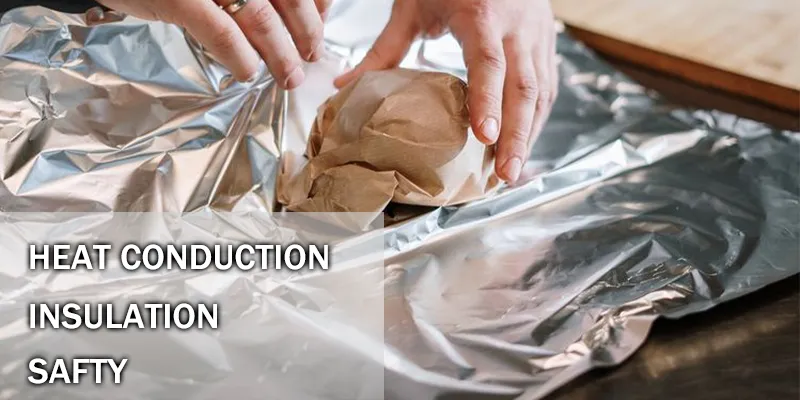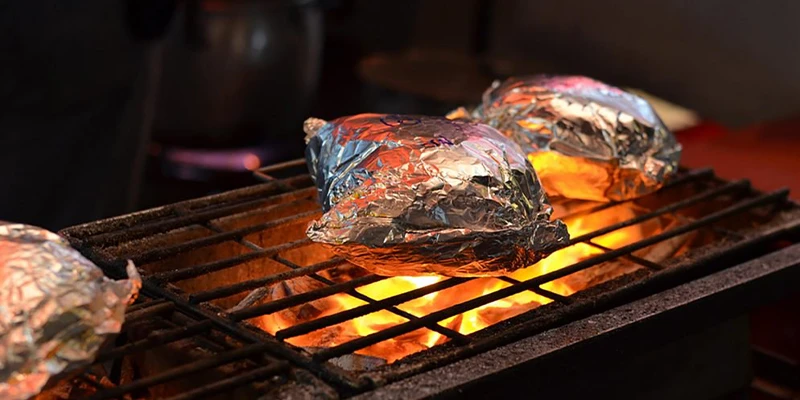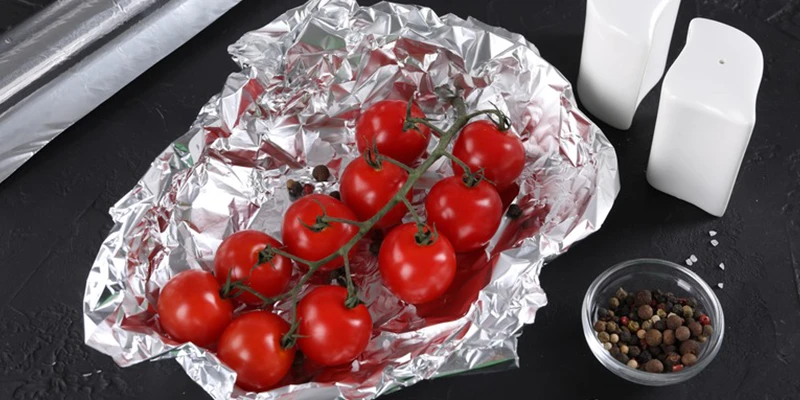
Heat Conduction: Aluminium Foil Melting Point Is High
Aluminum is the raw material for aluminum foil. And its melting point is 660.4 °C, and its boiling point is 2467 °C.
So, what is the melting point of aluminum foil? Theoretically, the melting point of aluminum foil is 660 °C. Under normal cooking, the foil will not melt, and it is not easy to reach the melting temperature.
When aluminum foil gets too hot, it melts. This causes aluminum oxide to form on its surface. As a result, the foil can become deformed, brittle, or even catch fire.
It is worth noting that aluminum foil can be used in the oven. You can buy some microwave-safe aluminum foil to use in the microwave.
The melting point of aluminum foil refers to the highest temperature at which it does not deform or melt during heating. Under normal conditions, aluminum foil melts at about 600 °C. However, its melting point can change based on thickness, quality, and shape.

Generally speaking, the thicker the aluminum foil and the better its quality, the higher its melting point. Aluminum foils come in different shapes, and they have different melting points. For example, flat foil melts at a higher temperature than curled foil.
In life, we will choose the right tin foil according to the purpose. For example, kitchen food packaging foil can handle temperatures up to 200 °C. Industrial aluminum foil has a higher melting point.
Insulation: Aluminum Foil Has Good Barrier Properties
Aluminum packaging foil has a smooth surface and no holes. It is very dense, which helps block air, light, moisture, and odors. This keeps food from oxidizing and going bad. The foil barrier property can also block RFID.
The barrier property is closely related to thickness. Generally speaking, the barrier performance will improve as the thickness of the aluminum foil increases. However, as the thickness increases, the plasticity and toughness of the aluminum foil will gradually decrease. For packaging, the thicker, the better.
The thickness of the aluminum foil has a more obvious effect on the barrier to oxygen. It is commonly thought that aluminum foil needs to be about 0.025 mm thick, or 25 μm, to work well as a barrier. However, the thickness needed can vary for blocking water vapor, aroma, light, and other factors.
Therefore, the aluminum foil thickness needs to be selected according to the packaging requirements.
Safety: Aluminum Foil Is Non-toxic
Aluminum foil is safe. It is made from over 99% pure aluminum and does not have harmful chemicals.

No harmful substances are added during production. This means it will not pollute food or other items it touches. Aluminum foil does not release harmful substances at certain temperatures. This makes it safe to use for cooking and heating.
Many aluminum foil products meet safety standards for food contact. They have been tested and certified by agencies to ensure they are safe and non-toxic.
Conclusion
The triad of barrier performance, thermal adaptability, and non-toxic positions aluminum foil as a material of utility.



